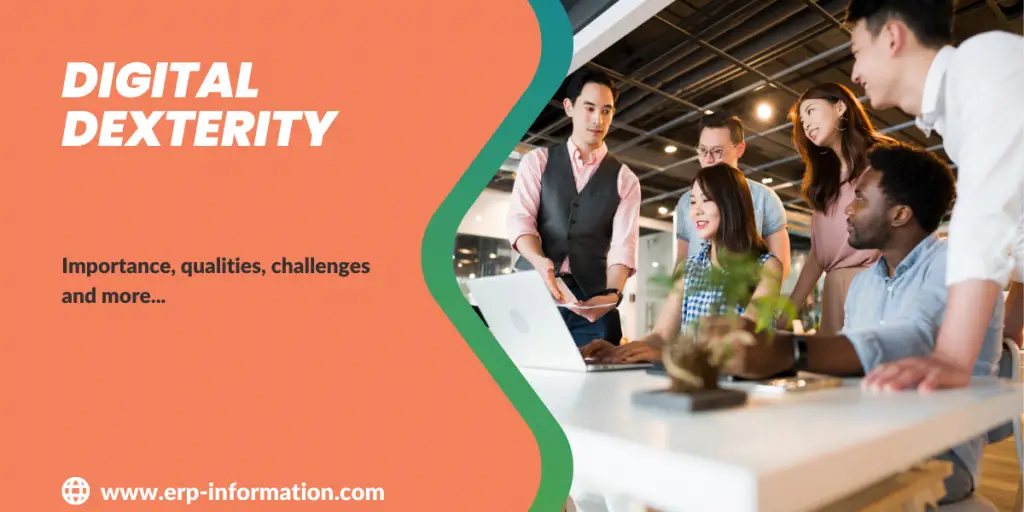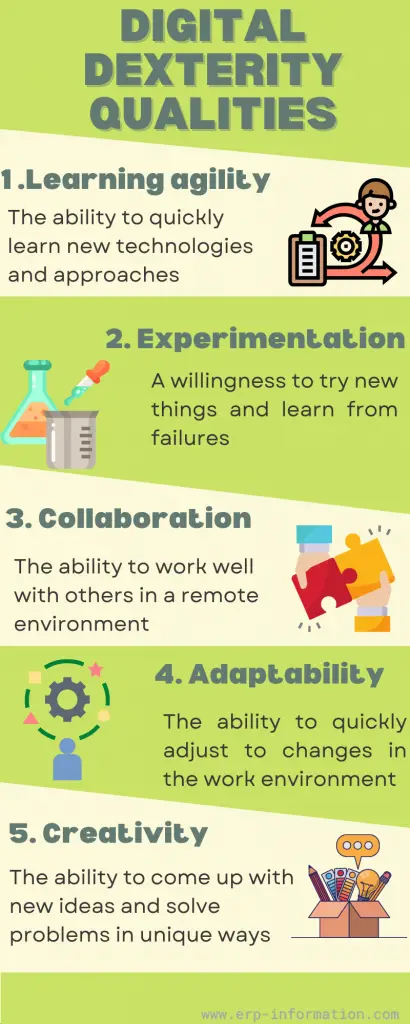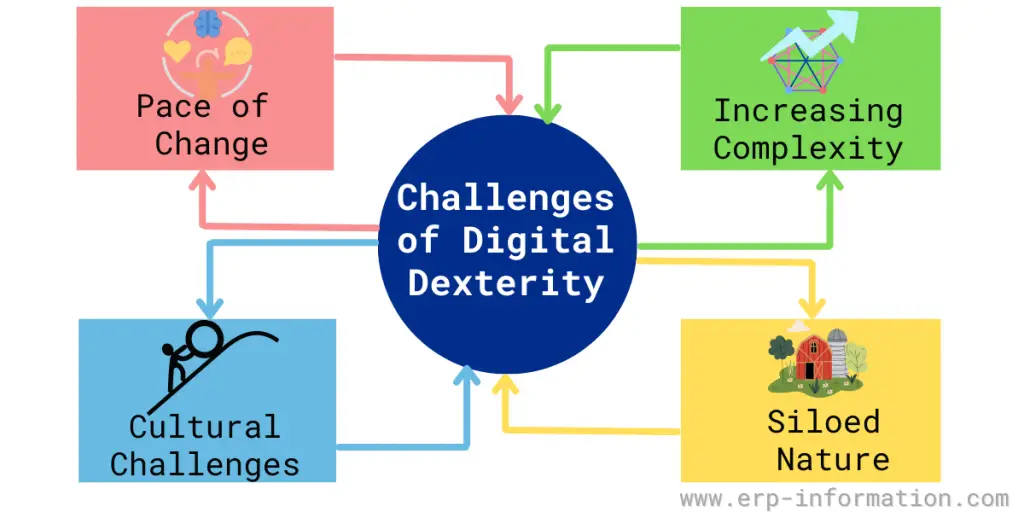In a rapidly changing digital world, businesses must learn to be agile and adapt quickly to new technologies, processes, and trends to stay competitive. This new way of working is called digital dexterity.
It would help if you had more than traditional IT skills to succeed in today’s digital world. They need new skills that allow them to be flexible and adaptable in the face of change.
This blog post will explore the definition of digital dexterity, its importance, qualities, and challenges. We also look into how to build it in the workspace, along with some of its benefits.
Digital Dexterity Definition
It is the ability of individuals and organizations to rapidly experiment with new technologies and innovative approaches, learn from failures, and update their skill sets to keep up with the ever-changing digital landscape. Upgrading yourself to new digital solutions will help you to stay stable in the competitive world.
Importance
It is vital for businesses if they want to stay competitive in a rapidly changing digital world. However, digital technology is also essential for individuals.
To keep up with the ever-changing market, you need to be able to adapt quickly and learn new skills.
It is not only about having technical skills. It’s also about having the ability to think creatively and be open to change. As a result, businesses embracing new technologies, digital tools, digital skills, and approaches will be more successful in the long run.
- More and more jobs use digital technology
- New tech is being developed faster than ever
- Businesses are switching to digital more quickly than before, which helps to better business outcomes.
- As a result, the way we work is changing quickly
Qualities of Digital Dexterity
- Learning agility: The ability to quickly learn new technologies and approaches
- Experimentation: A willingness to try new things and learn from failures
- Collaboration: The ability to work well with others in a remote environment
- Adaptability: The ability to quickly adjust to changes in the work environment
- Creativity: The ability to come up with new ideas and solve problems in unique ways
Challenges
Pace of change
One of the biggest challenges facing businesses today is the pace of change. Technology is evolving rapidly, and companies must learn to adapt quickly to stay competitive. Successful digital transformation will help to stay business competitive in all stages.
That can be a challenge for businesses that are used to working in a traditional, linear way.
Increasing complexity
Another challenge is the increasing complexity of the digital landscape. With so many new technologies and approaches, it can be difficult for businesses to know where to start.
Siloed nature
One more challenge is the siloed nature of most organizations. Often, different departments within an organization are working independently from one another instead of collaboratively.
That can lead to duplication of efforts and a lack of consistency across the organization.
Cultural challenges
Finally, businesses must also overcome the cultural challenges associated with digital transformation.
That includes overcoming resistance to change and getting employees on board with new ways of working.
Building Digital Dexterity in the Workplace
Organizations must create an environment that encourages learning, collaboration, and creativity to build it in the workplace. Here are some ways to do this:
- First, encourage employees to experiment with new digital technologies and approaches.
- Create opportunities for employees to learn from failures.
- Encourage collaboration among employees across departments.
- Finally, update job descriptions to reflect the changing nature of work.
Building Digital Dexterity in Employees
HR leaders should be the ones to get digital dexterity started in an organization. But other parts of the organization must make it happen.
- To start a foster digital dexterity program, figure out the important skills and spread the word about what apps to use and how well those apps should be used. Human Resources and IT can work together to create a “new work hub” for people and teams to use so they can do their work better.
- Organizations can help employees learn new skills by connecting them to people or projects they need to practice. This help can make employees more prepared than if they had to do it independently.
- Companies should find people with digital knowledge to help their leaders. These people will explain things in a way the leader can understand so that they can complete digital business projects.
- You can have “skill disseminators” at your job. These are people who help others learn new digital skills. Start by finding someone who wants to learn and teach, is open to trying new things, and has a lot of friends. They can help teach these skills to other workers to improve their digital capabilities.
Benefits
- Increased innovation
- Higher productivity
- Better customer experiences
- Higher employee satisfaction
- Increased profitability
- Complete agility
- Advanced risk appetite
FAQs
How is digital dexterity measured?
It can be measured in various ways, including employee satisfaction surveys, innovation surveys, and customer satisfaction surveys.
Organizational leaders can also track the number of patents filed or the number of new products and services launched.
What is digital transformation?
Digital transformation is when a company uses digital technologies to change how its products, services, or operations work. They do this to make things better for customers or be more efficient.
What is the difference between digital dexterity and digital eternity?
Digital literacy means having the skills and knowledge to understand digital tools like computers. Digital dexterity is about using those tools in your everyday life.
Conclusion
Digital dexterity is vital for businesses and individuals in today’s rapidly changing digital world. It allows companies to be more flexible, find adaptable digital solutions, and be adaptable to changes while workers can keep up with the ever-changing job market.
Therefore, organizations should encourage experimentation, collaboration, and creativity to build digital dexterity in the workplace.
Digital adoption has many benefits, including increased innovation, improved customer experiences, and higher employee satisfaction.


